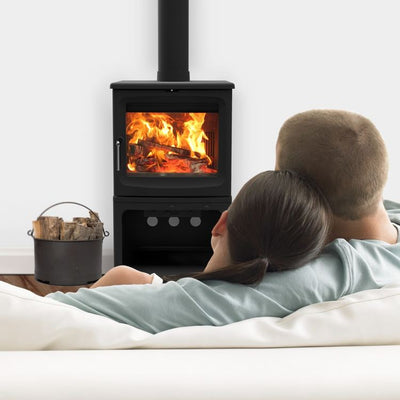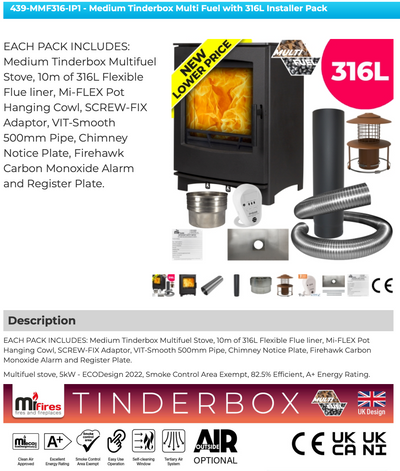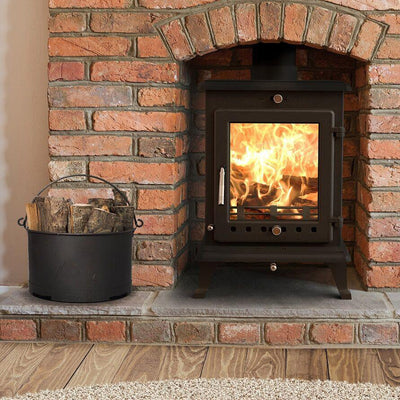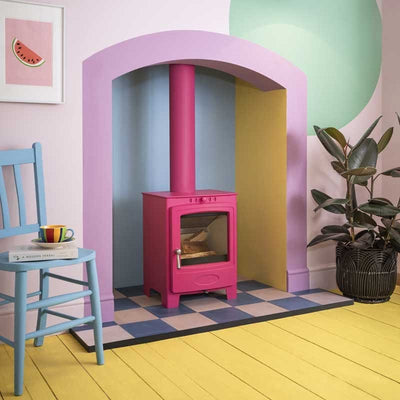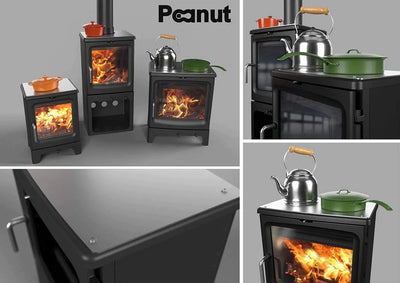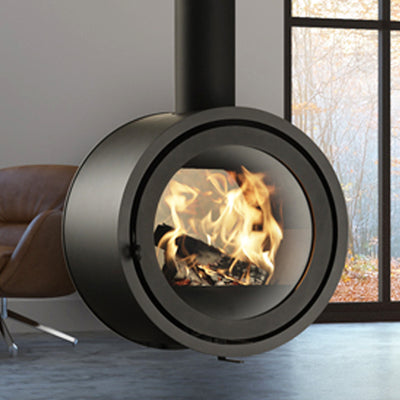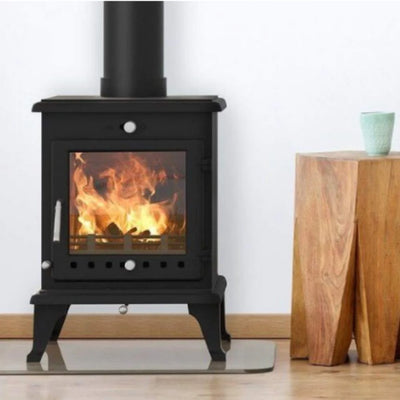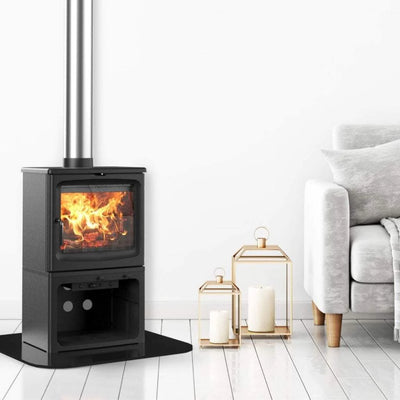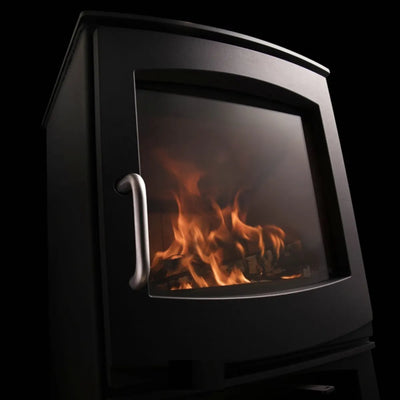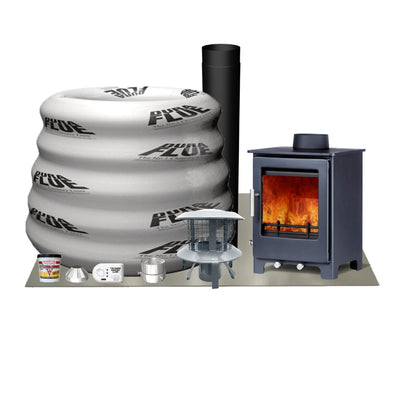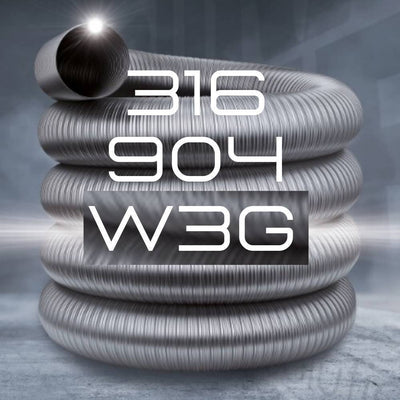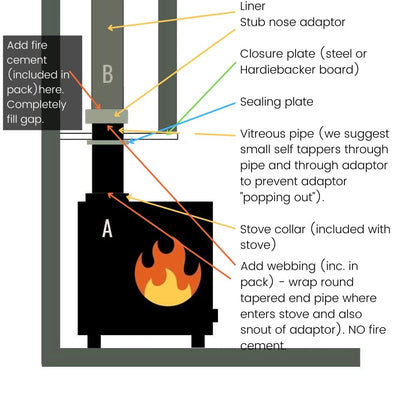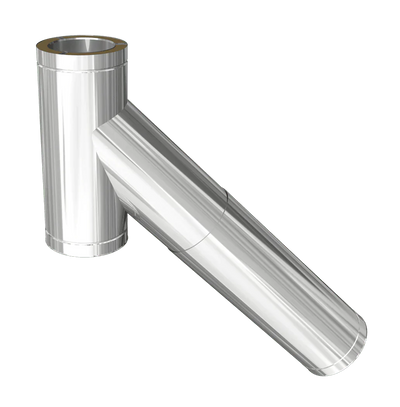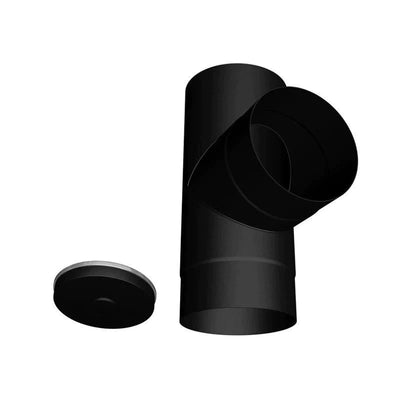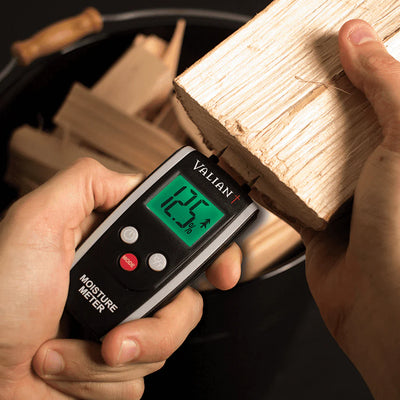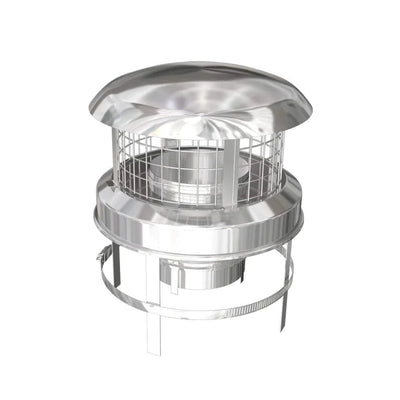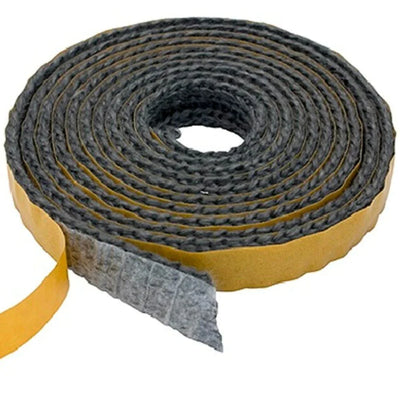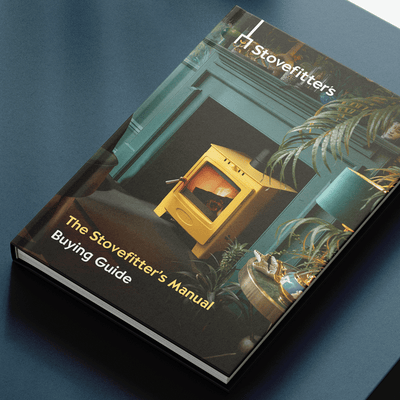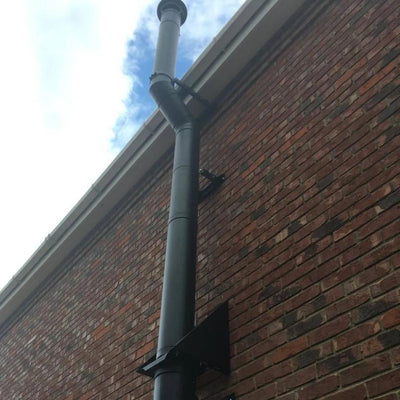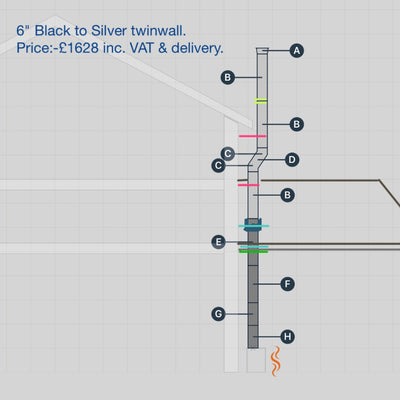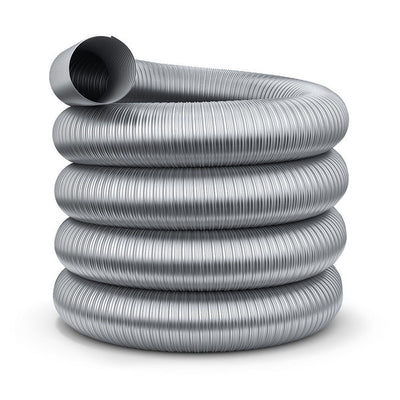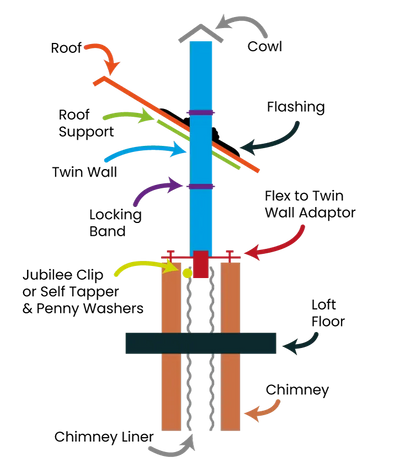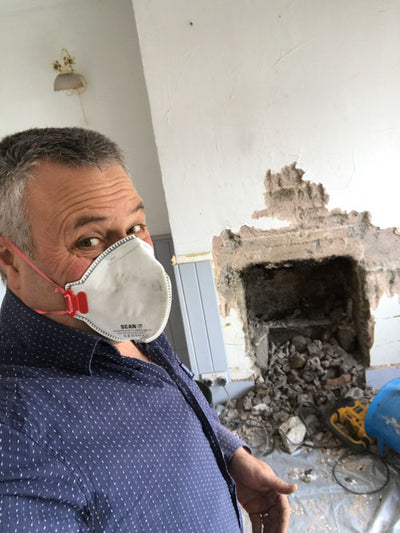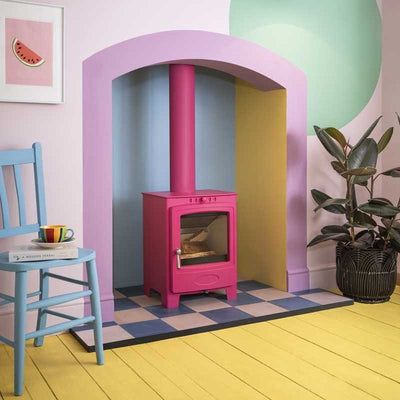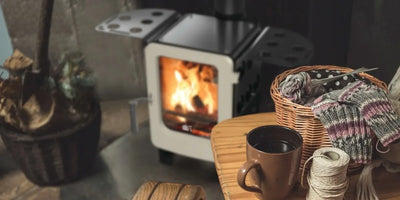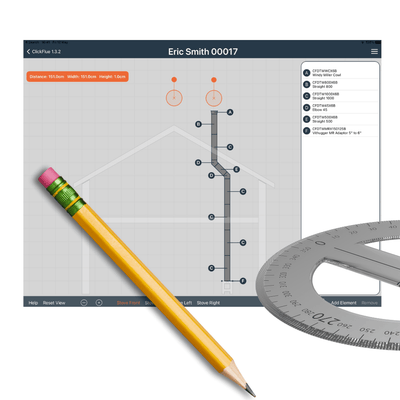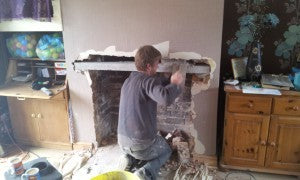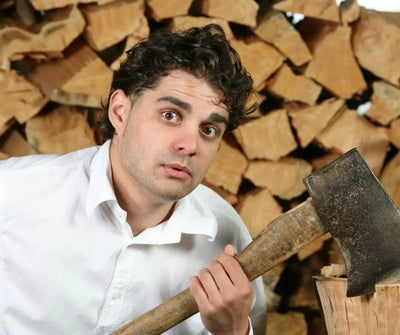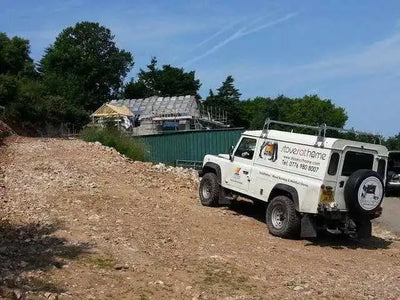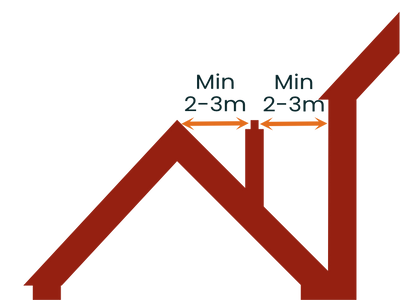Can I have a wood burning stove if I have no chimney?
5 mins
Can I have a wood burning stove if I have no chimney?
No chimney? No problem!
If you don't have a chimney you will require a clip-together twin-wall system referred to in the trade as "twin wall".
If self-installing you can read our helpful Installing a Twin Wall Flue Chimney guide.
Everybody with no chimney might also find this guide to chimney regulations useful (short useful video included).
You can buy the individual components from us, or a bespoke designed twin wall system.
Need an installer? A list of installers who will fit our flue systems.

Surveying your property
Let’s see what a full time stove fitter or self installer must look at when surveying a property for the first time:
A stove fitter will almost always visit and survey your property prior to providing a quote/plan of action for installing a wood burning stove. You will already know your own property well and may also have already decided what your installation plans are. This area of the website is though of some importance and it is advised that you act like a stove fitter and conduct your own survey using the information provided.
One of the stove fitter’s firsts tasks will be to obtain your address. He needs this to find you of course… but he will also check to see if you are in a smoke controlled area. If you are in a smoke control area then he knows he must steer you towards ordering a stove approved by DEFRA if you wish to burn wood. All the stoves sold on this site are DEFRA approved.
The first direction an engineer will usually look when he pulls up outside of your property is upwards: is there a chimney stack? If he cannot see a stack then he makes a mental note that he might soon be creating one – using high temperature (HT) twin wall flue pipe also known as double-skin flue pipe or stainless-steel flue pipe. We’ll come back to this shortly.
If there is a brick or stone chimney present he’ll be mentally calculating how high it is (the higher the chimney the better the performance of the stove although anything that will add 4.5m above the stove should be acceptable).
Does the chimney have a pot? Is the pot suitable? Does the top of the chimney pot have sufficient clearance, horizontally, from any roof surface, wall, obstacle?
If there is a chimney then his mind will also likely be thinking about how to fit a chimney liner: if he has to line the chimney with flexible flue liner (silver metal tube) can he use ladders or is this a scaffolding job, cherry picker maybe? Is the stack safe to climb on top of to fit the chimney liner?
This is all before he has knocked on your door.
Once inside the stove fitter will speak to the house owner and the situation will quickly become apparent: the householder does or does not have a chimney in the location where they want a wood burning stove installation.


Chimney, inglenook and hearth are present
In this case the stove fitter will be thinking various thoughts: Is the recess big enough for a wood burning stove installation and is it of a suitable construction? Is the hearth big enough for a stove installation and of a suitable construction for that stove? Are there any potential fire hazards present, in particular wooden beams/lintels?
He will likely shine a powerful torch up the chimney and decide if it requires the fitting of a flexible chimney liner, whether vermiculite chimney insulation is necessary and whether a liner will fit (5″ or 6″). He might decide that a chimney liner is not necessarily required although this is uncommon. He may also take notes on what flue materials and flue pipe will be necessary; the size of stove for the room. Is an air vent required? Is there an extractor fan in this or an adjoining room that might cause problems? He will speak with the householder about stove choice.

Chimney present but small, open fire/gas fire/electric fire fitted (or recess bricked/boarded up)
In this case the stove fitter will be wondering, if there is one, how big an original fireplace (builder’s opening) is behind the existing fire or wall surface for the wood burning/multifuel stove installation? He will be thinking about opening up this recess.
He will, if he has room (with open fires one often has enough room and sometimes electric fires can be easily removed) shine a powerful torch up the chimney and decide if the chimney requires lining with a chimney liner, whether vermiculite chimney insulation is required and whether a liner will fit? If not he will discuss this issue with the customer.
He might (rarely) decide a chimney liner is not necessarily required.
He will also take notes on what flue materials will be necessary; what size stove for the room; is an air vent required? Is there an extractor fan in this or an adjoining room that might cause problems?
He will speak with the householder about stove choice, hearth choice and the process of making good following the excavation of the recess.

No chimney present but you want a logburner
Twin wall flue refers to the silver pipe you can see in the picture on the left. It is well insulated to retain the heat in the rising smoke and gases (heat rises so keeping it hot is good), thus allowing it to be used instead of a stone or brick chimney and outside of a property.
In this situation where there is no chimney, the stove fitter will be looking at the proposed location of the stove and evaluating if a route for the new twin wall flue is possible. He might decide a different stove location is more suitable.
He will look at whether the twin wall flue should leave the room and proceed outside of the building, or whether an internal route through the structure of the building might be the better choice.
He will be thinking about distances to combustible materials and legal regulations on chimney height and performance. He will be bearing in mind the maximum amount of bends he is allowed in the chimney (it’s four by the way – all detailed in the relevant section).
He will take notes on what flue materials will be necessary; what size stove for the room; is an air vent required; is there an extractor fan in this or an adjoining room that might cause problems. He will speak with the householder about stove choice, hearth choice and the process of making good following any holes in walls and ceilings.
With twin wall flue he will also be readying himself to give a price to the customer. Twin wall flue (materials cost, not fitting) is approx. £100 a metre with supports, cowl and other auxillaries swiftly adding up. This is a chimney being built and it helps to bear this in mind when looking at the flue materials costs. A brick or stone chimney would hurt the wallet a lot more.

Shed, shack, boat, van?
After reading this article you might wish to order one of our 3-metre chimney kits suitable for sheds, shacks, vans, caravans, home offices etc.

Conservatory or extension?
After reading this article you might wish to read more about chimneys for conservatories and extensions.
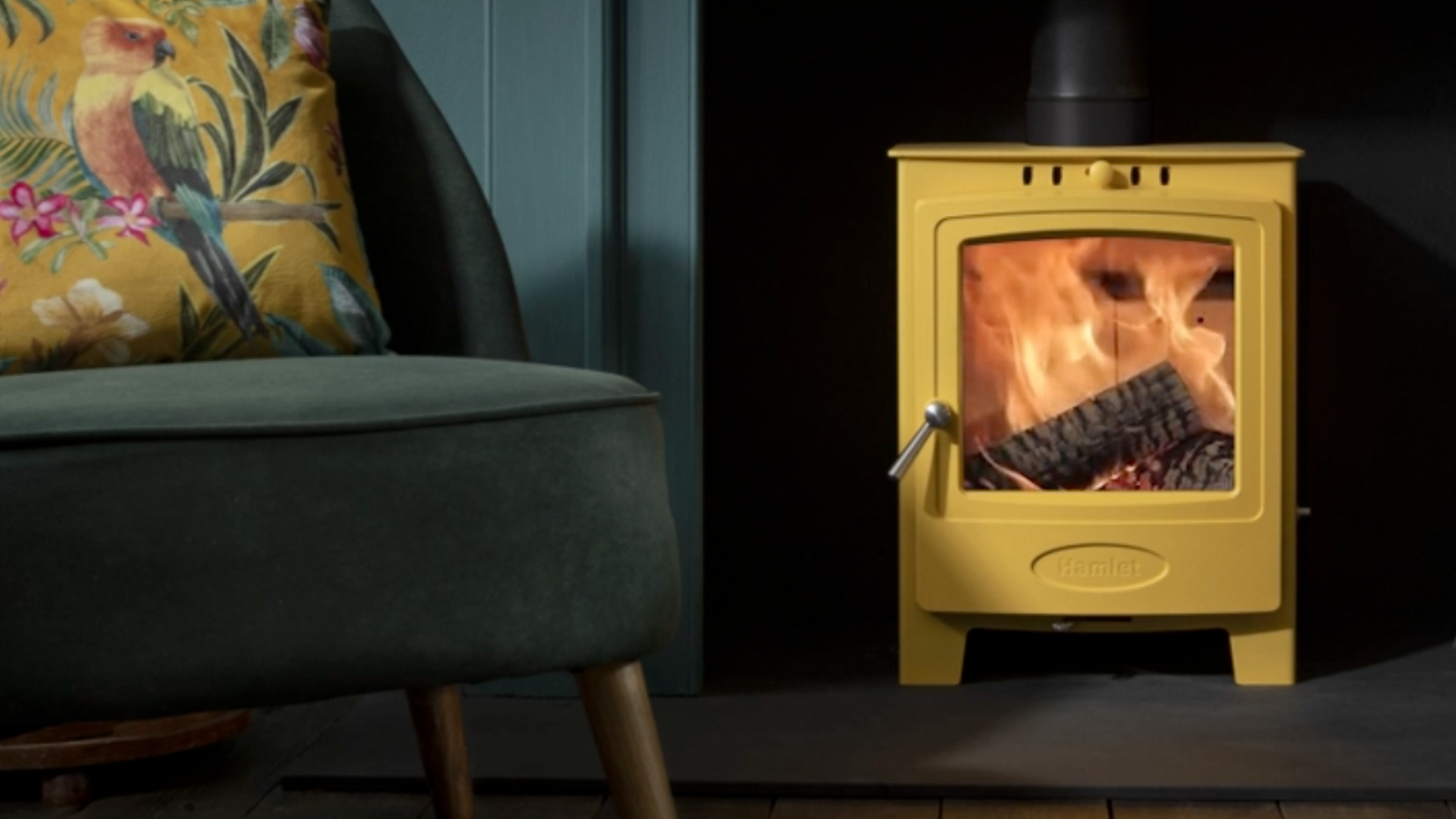
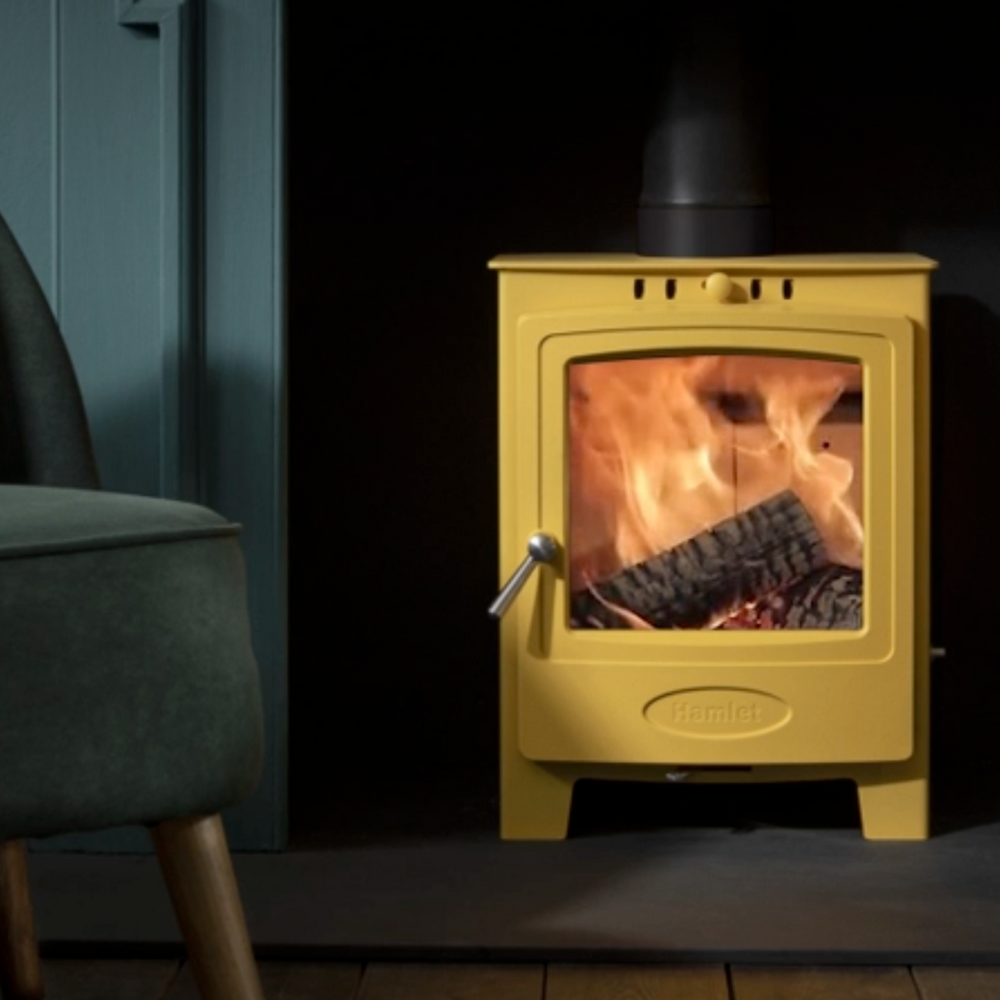
Installing a twin wall chimney - what do I need?


Installing a stove in a fireplace - what do I need?
FAQs
See all FAQsCosts correct as of April 2023:
Approx. costs if you have a chimney and fireplace ready to use: £750-£1,000 (save £500 by self-installing).
Approx. costs if you have a chimney but need the fireplace "opening up": £1,600-£2,200 (save £1200 by self-installing).
Approx. costs if you do not have a chimney and need a clip-together flue: Shed £475-£700. Bungalow £1500. 2-storey house £2500. Save £1,000-£1400 by self-installing.
Above figures include labour and materials but no appliance.
We, of course, advise you to purchase your stove and materials from Stovefitter's to ensure quality goods are installed (some installers use budget materials to increase margin). If you buy your stove from us (rather than your local small shop or installer) we have a lot more power when approaching manufacturer's with a warranty issue. Why is that? Because we buy many hundreds of stoves a year from these brands.
We do not fit stoves.
But we know a few who do!
Google: Hetas installers
Hetas are the trade body of registered UK installers.
Most installations will require that you slide a chimney liner down your chimney (flexible metal tube 5" or 6" in diameter). Do you have a narrow chimney and want to lessen the risk that a liner might not go down your chimney? Then make sure your chosen stove can use a 5" liner.
Must I line my chimney? Best read this article but most likely the answer is yes. Do I have to fit a chimney liner?
DEFRA-Exempt wood burning stoves with a 5″ collar can usually be fitted to a five inch liner rather than the usual 6″ minimum, making the installer's job much less stressful.
ALL OF THE 5KW STOVES WE SELL CAN BE FITTED TO A 5" CHIMNEY LINER.
I seriously suggest any self installer fits a 5" liner unless they know their chimney is large enough for a 6"!
What is the best chimney liner? Silvacore 904 (we sell it so of course we will say that ;-). What is the best chimney liner?
Useful links
Will your stove require an air vent within the room (some stone walls are very difficult to drill)?
5kW or under and wood burning stoves often do not require an air vent (new builds always require an air vent).
Useful links
What is the maximum output in kW of your "5kW" wood burning stove? The majority of manufacturers just specify the “nominal output” and this figure means very little in real life. The nominal is a figure the manufacturer chooses to sell the stove at - the stove is capable of reaching at least this output with one fuel load. Nominal means "capable of". But it is not the maximum.
Check out the size of the area where the logs will go (firebox size) as this varies enormously. The kW output is completely dependant on the amount of logs burning at any one time - more logs burning equals more heat. If you can fit three logs in stove A and just two logs in stove B then stove A will be capable of throwing out 33% more heat.
DO NOT TRUST MANUFACTURERS’ kW RATINGS as manufacturers specify what output they desire to sell the stove at and testing allows for much “playing with the figures”. This is why you can get very small 5kW stoves (e.g. Aga Little Wenlock) and very large 5kW stoves (e.g. DG Ivar 5 by Dik Geurts which is actually rated 5kW but has a MUCH larger firebox than the Ekol Crystal 5 by Ekol Stoves). A Crystal 5k might get to 5kW and not be capable of any higher whilst a DG Ivar, despite being rated at 5kW, can get to 8kW with a full fuel load.
Note that, over time, one might damage the internal firebricks of a stove by running at a higher load than the manufacturer's suggest. Firebricks are easily replaceable.
Useful links
Will your wood burning stove fit in your recess WITH the required air gaps around it? This is obviously not an issue if your stove will be freestanding.
Air gaps to non-combustible materials (brick, stone etc.) are usually "as close as you like" legally but manufacturers will sometimes specify a recommendation. This recommendation is there to allow heat to escape from the recess into the room - so you get the heat benefit rather than the heat soaking into the building structure and being lost. If no gap to non-combustibles recommended then we suggest 50-100mm air gap left and right of stove, 50mm behind and 100mm above.
Are you in a Smoke Control Area (usually built up areas)?
Choose your stove accordingly.
A stove must be DEFRA-Approved if you wish to burn wood in a smoke control area.
ALL OF THE STOVES WE SELL ARE DEFRA APPROVED FOR SMOKE CONTROL AREAS.
In simple terms if a stove has an efficiency rating of 70% then 30% of the heat from your logs goes up the chimney.
If a stove has an efficiency rating of 90% then only 10% goes up the chimney.
So think of this in terms of how many logs you have to chop/buy.
Example: A Saltfire Peanut 5 by Saltfire Stoves in Dorset has an efficiciency of 80%.
A tall chimney (6m or more) that is lined will be happy with an efficient stove.
Efficiency importance can be said to be overrated and anything between 75% and 85% is fine. Go much higher and performance can actually suffer (smoke in room when opening door to reload, blackening of glass).
Many modern stoves can go on 12mm thick hearths. Others require full, 5″ thick constructional hearths. All of the stoves we sell state whether or not a 12mm hearth is suitable.More about hearths for wood stoves here.
Helpful links
Can you can talk to somebody on the phone should you need to after the wood burning stove has been delivered, especially if you are self installing? Will the staff at “wesellzillionsofstoves.com” be able to assist with any installation issues? What if there are any problems after install?
Do yourself a favour before ordering stoves or materials on the Internet: Go to Trustpilot and type in the company name before you buy. Some companies advertising at the top of search engines are not good news - check for yourself.
When striving to find thebest 5kW wood burning stovesyou will likely be bewildered by the choice. There are many to choose from. The question I get asked most in our shop is “why should I pay <£1,000> for this one when this other one is just <£500>?”. Here is the very simple answer:the cheaper wood stoves are made in Chinaor Eastern Europe whilst the more expensive are made in Western Europe (or sometimes the USA). Here are a few examples where a more expensive stove might excel over a cheaper stove:
- Aesthetics (more time spent on design)
- Hinges (sometimes hidden on more expensive stoves)
- Better quality glass
- Thicker steel (longer life)
- Improved door locking mechanisms
- Longer warranty
- Improved controllabilty of flame due to more resource invested on design of air flow within stove
- Brushed steel fittings instead of cheapy chrome look
Open and close the door on a cheap Chinese stove. Then open and close the door on a DG stove, Arada stoves, Woodford stoves, Hamlet stoves or Saltfire stoves. You’ll understand the difference.
Stove pricing reminds me of wine pricing. A £20 bottle of wine is not double the quality of a £10 bottle of wine (the drinking experience might be improved by 20% as an example). We are talking “the law of diminishing returns here. They are all “fire in a metal box” at the end of the day.
Yes. However, there are specific regulations and restrictions in place to address air pollution concerns, particularly in areas designated as Smoke Control Areas. In these areas, only approved "smokeless" fuels or exempt appliances, such as Defra-approved wood-burning stoves, can be used. These stoves are designed to burn wood more efficiently and produce fewer emissions.
All the stoves we sell are DEFRA approved and Eco-design approved and suitable for all areas of the UK.
Other articles you may find useful
The Stovefitter's Manual
Terminology
View all TerminologyA stainless steel tube, slides down a brick/stone chimney to provide a smooth and safe route for smoke.
All of our stoves are approved by DEFRA to burn wood in all UK locations including Smoke Control Areas (towns and cities). Not all stoves are, so be careful if buying elsewhere.
All of our stoves are ECODESIGN approved to be sold in the UK. Not all stoves are, so be careful if buying elsewhere. ECODESIGN is mandatory by law since January 2022.
The base your stove sits on.
If the chimney is the polo mint then the flue is the hole.
Buying guides
The Stovefitter's Manual
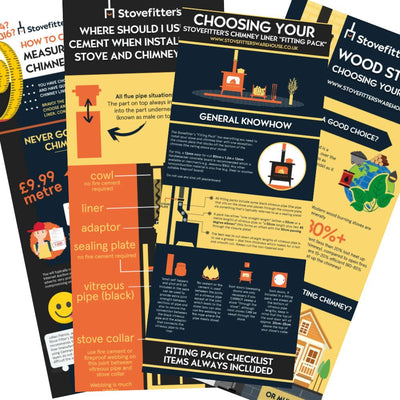
How to choose a wood burning stove for your property (includes infographic)
Infographics

What size wood stove do I need? Don't let manufacturers fool you!
Buying Guides
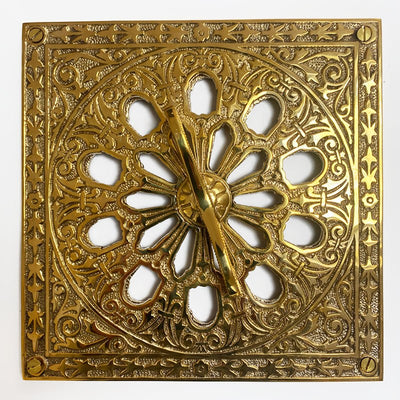
Do I need an air vent for a wood burning stove? If I do not bother?
Buying & DIY

Knowledge Tree: Process of buying and installing a wood burning stove
Buying & DIY
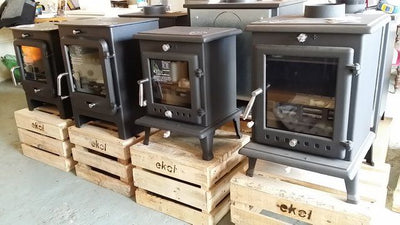
Chinese wood burners – should I buy one or are they all crap?
Buying Guides

What else do I need to buy to install a wood burning stove?
DIY Guides

Infographics for wood burning stove purchase and install
Infographics
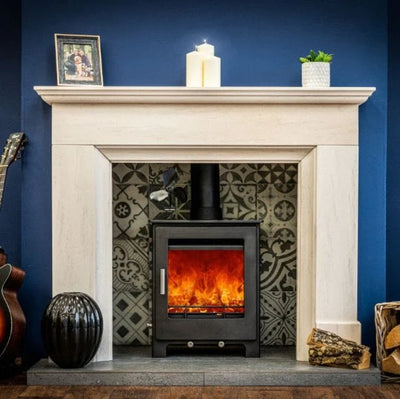
Wood burning or multifuel stove? A stove fitter decides.
Buying Guides
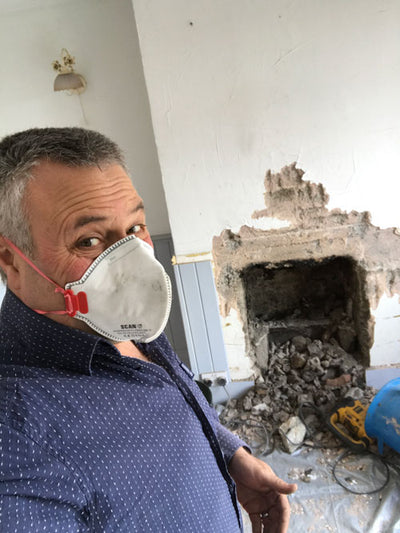
A few words from Julian
Buying & DIY
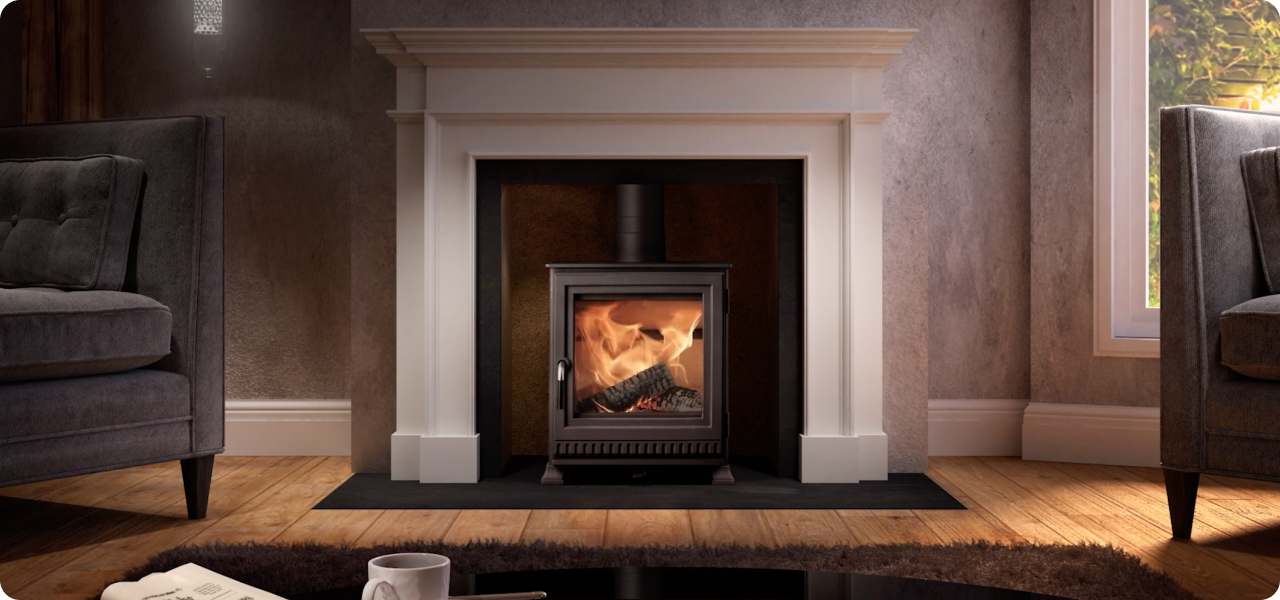
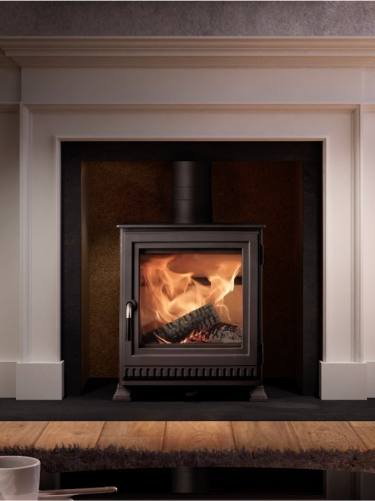
Find my perfect stove
Answer 3 simple questions and we will show you the best Stoves for your space.

